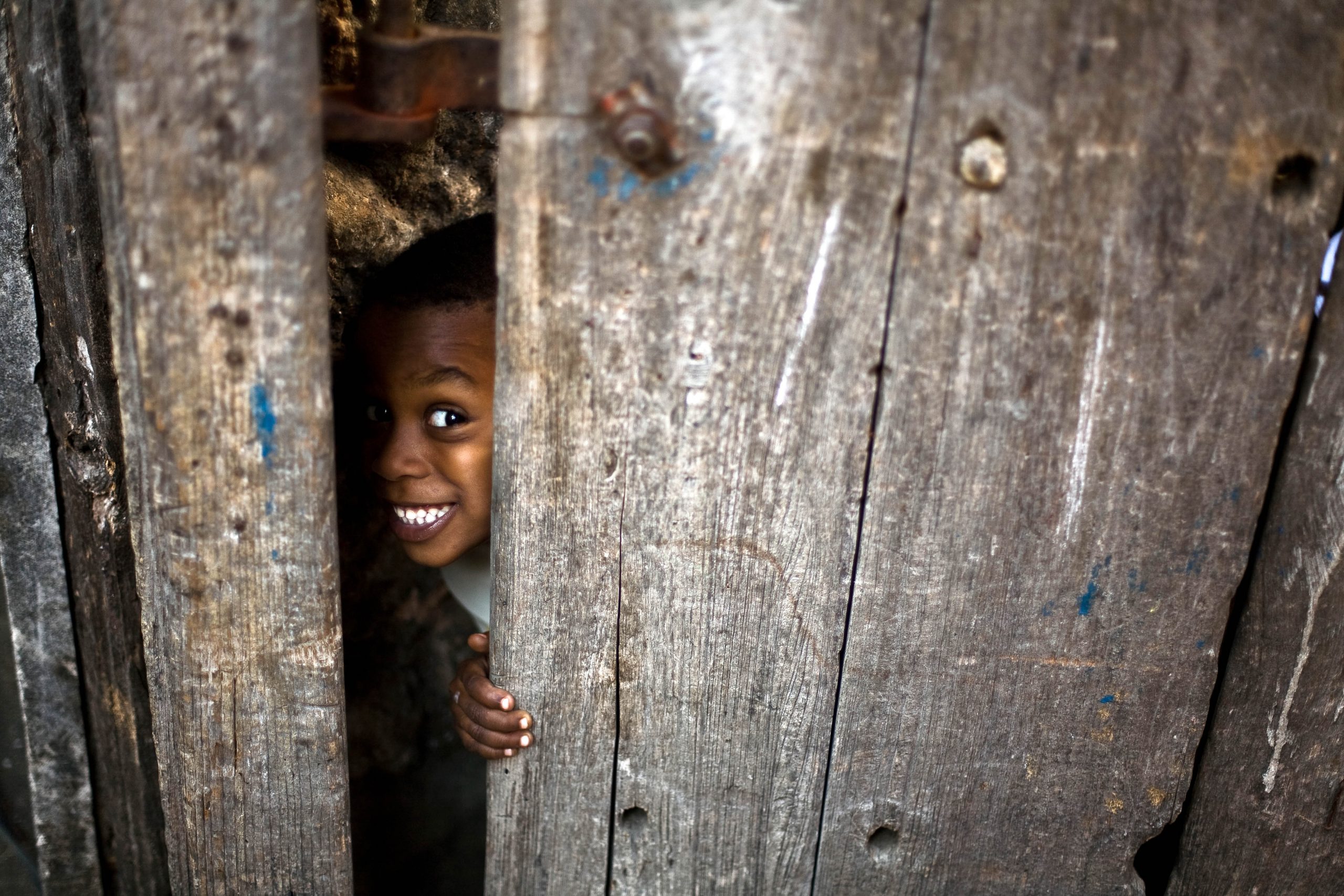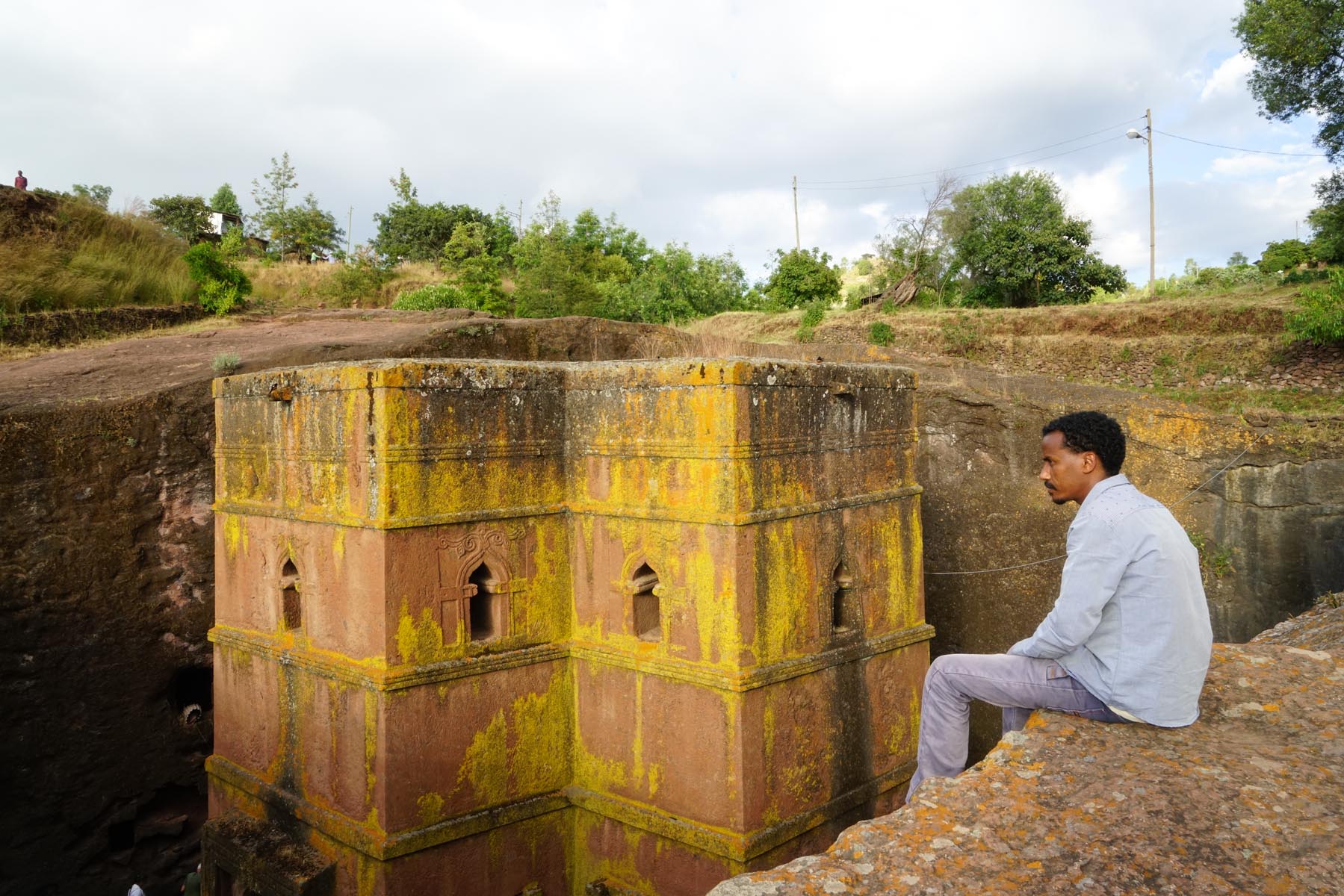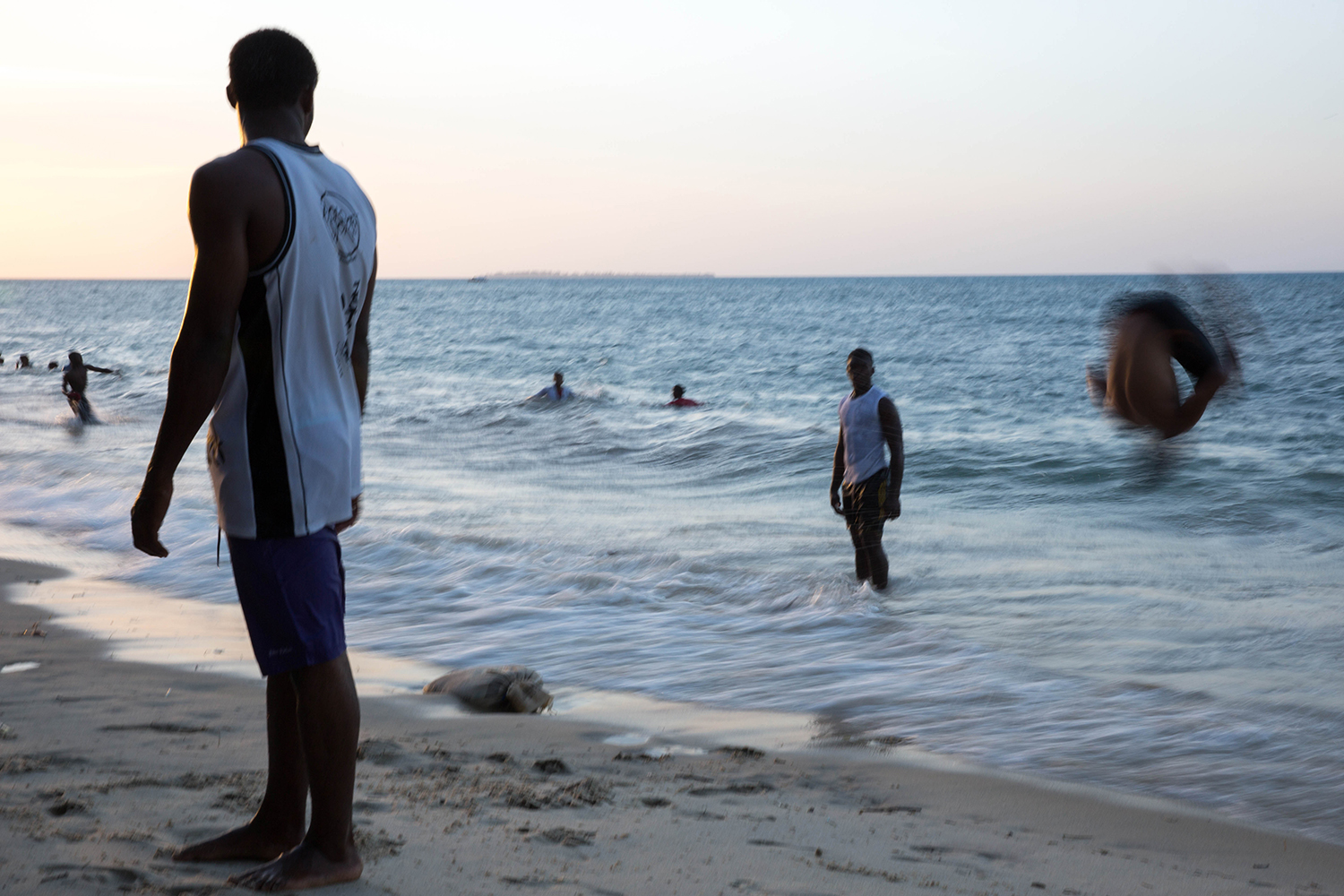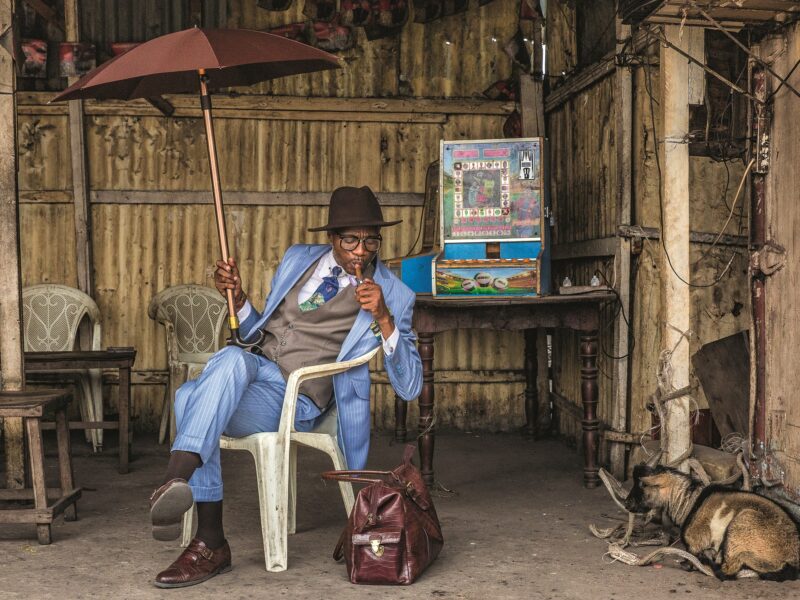Emre Rende: Quest for African Style
Photographer Emre Rende has been pinning the African map for years in pursuit of local fabrics and symbols, baobab trees and lemurs, turquoise waters, and sometimes heartbreaking images of the civil war. He takes us on a “bird’s eye view” tour through the African style and the continent’s cultural spectrum.
You are graduated from SOAS, a famous school in London dedicated to Eastern and African studies. What kind of a perspective has this school given you on Africa?
School of Oriental and African Studies is a university in its own right, within the University of London. It is a very old institution that originally started off as a school teaching Asian and African languages, and then evolved into a university. Now it is a place for studying politics of the Middle East, Gulf states and Africa. By the way, it is also one of the rare departments focusing on Turkish politics in the West. It is a small university resembling the United Nations, gathering people from the South to the East, who speak different languages like Hebrew or Persian. It let me have a broad vision.
For the Western world, most of Africa was uncharted territory up until the end of the 1800s. Western traders had a stronghold along the coasts only. In fact, the African continent still has obscurity for most of us. When did Africa cease to be “invisible” for you?
Usually, the first African experience of people from Turkey or from the West is exploring Morocco or Egypt, as there is certainly a more developed tourism infrastructure there. I remember the first time I went to Egypt when I was 16-17 years old and how important it felt when I first stepped on the African continent. If you ask the Egyptians, they are definitely not Africans. If you ask Africans, Egypt is not part of Africa. As I learned more about the continent during my studies at SOAS, I realized how multi-layered Africa is. Then the curtain began to rise slowly. My first real (I mean sub-Saharan) African experience was in Kenya. My sister Zeynep and I were more focused on the African style, design and woodworking back then. We discovered the incredible fabrics of Africa. Safari has never been something that excited me. In time, I started to get curious about African cities like Johannesburg and Dakar.
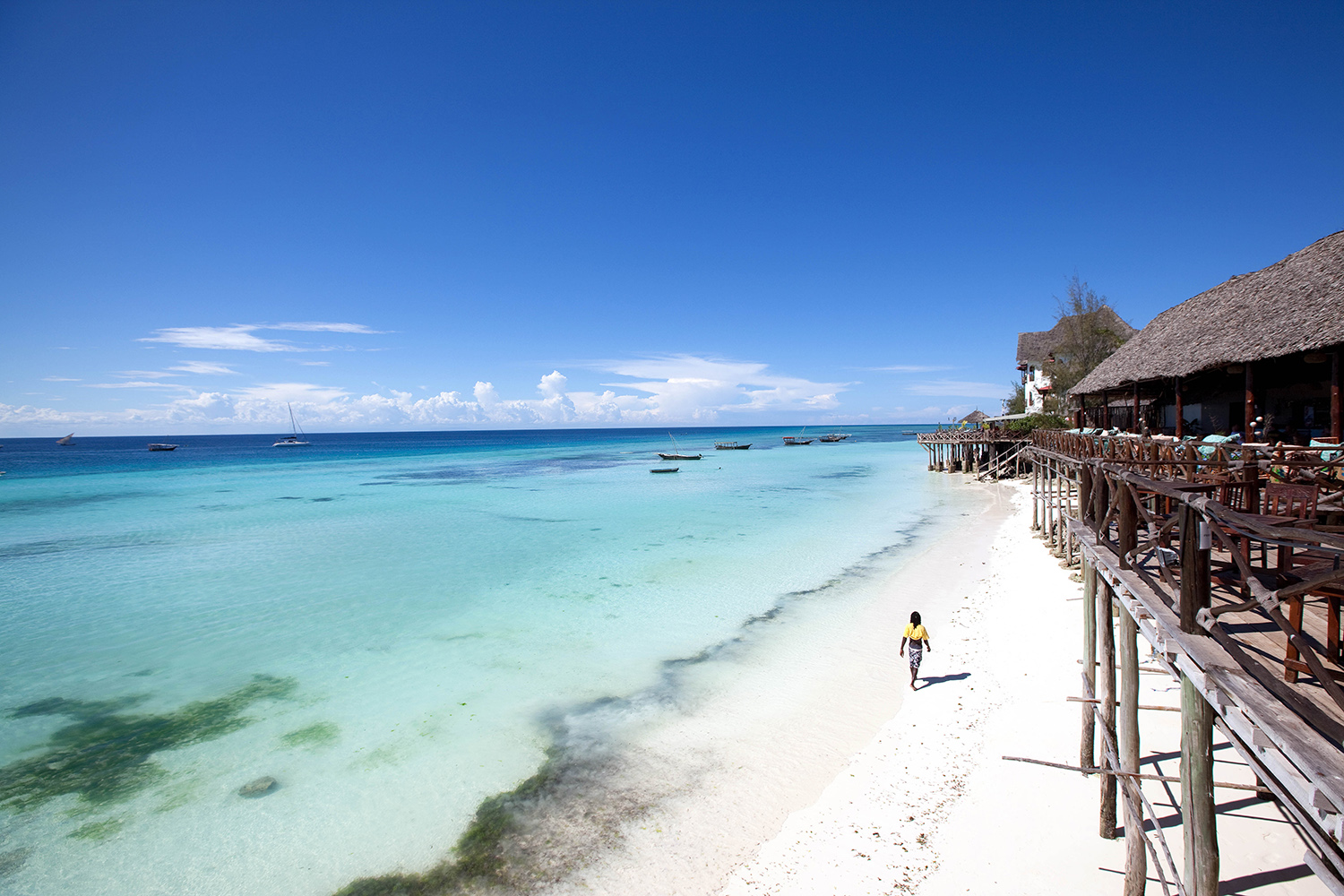
PRISTINE BEACHES OF THE SWAHILI COAST
You lived in Kenya for two years. During the time, you were reporting to agencies such as Al Jazeera and Reuters and visited more than 20 African countries. Shall we talk a little bit about the time you spent in Kenya?
While we were living in the Middle East, my wife had a job offer from Kenya in 2013. I remember saying instantly: “Get the suitcases ready, we’re going!”. We had already explored some regions like Madagascar and Zanzibar, but I had always wanted to live on the African continent. The Swahili Coast, including Kenya, has a very unique culture. This is a predominantly Muslim region in East Africa, covering the whole coastal territory starting from Somalia in the north, continuing along with Kenya and Tanzania, and extending down to Mozambique in the south. Although the inland territories of these countries are usually Christian, the coastal strip is where Islam first arrived after Mekka and Medina, due to the ages-old trade connections established with the Middle East and Asia. People living here are also ethnically very different, in comparison to other regions. There are even some special Swahili tribes like the Bantu, for example. Swahili is spoken all along these regions. And of course, the Indian Ocean meets Africa along the beach. There are common cultural features that dominate the entire Indian Ocean from Kenya to the Maldives and Sri Lanka. Naturally, the kitchen is also very similar. Thanks to the Indian influence, you can find samosa as street food in all these East African countries that I have mentioned above. Coconut curry dishes are abundant everywhere. As an India lover, that was one of the things that impressed me most on the Swahili Coast.
There is a lot to see on the Swahili Coast from a touristic point of view, isn’t it? How would you compare that part of Africa to others?
One of the most famous Swahili centers is Zanzibar Island. The Oman sultan moved his capital from Muscat to Zanzibar and ruled from there. That incredible wealth is still visible in the exquisite architectural details of Zanzibar palaces. We’re talking about a beach with some of the most beautiful and turquoise seas in the world here. The beaches of Kenya, Tanzania and Mozambique are mind-blowing as well! Of course, safari tourism is also very important in Kenya and Tanzania, but people generally prefer 3 days of safari followed by 3 days at the seaside. The east coast of Africa attracts more tourists compared to the west. West Africa does not have so beautiful beaches.
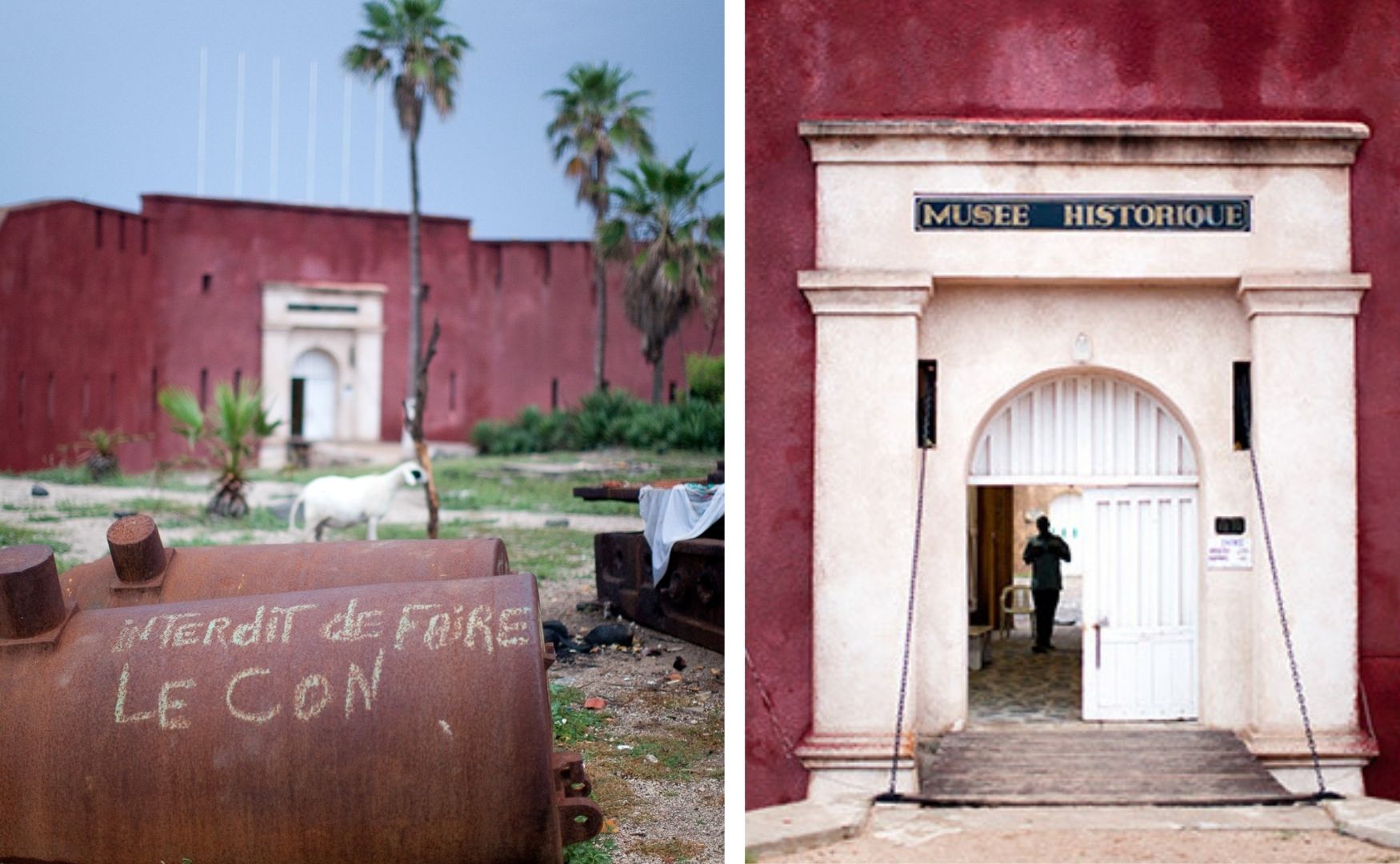
HISTORY OF SLAVERY IN WEST AFRICA
What could attract people to West Africa then?
Culture is more prominent there. You wouldn’t find many travel guides written for West African countries. Let’s take Ghana, for example. Ghana is an extraordinary place! It was the first African country Obama visited after being elected as president. Of course, all hell broke loose when Obama visited Ghana, as a Kenyan descendant! There aren’t many touristic places in Ghana that I can suggest to you as “unmissable”. But there are many more interesting things. One of the reasons why Obama visited there is that Ghana has always been one of the most stable and democratic countries in Africa. This tradition actually dates back to the Ashanti Empire, which was founded in the 12th-13th centuries. This empire was born in today’s Ghana and the Ivory Coast, and later grew to be a very serious cultural and economic power by capturing the surrounding territories. They have an incredible belief system and set of proverbs. We use these proverbs, symbols, stories and fabrics of Ashanti mythology in the designs we make for our brand “3rd Culture”.
Do you think the fact that Ghana was one of the main bases of the Atlantic Slave Trade carrying millions of people from Africa to the New World also had an effect on Obama’s visit?
Exactly. The Slave Route, as well as the castles and prisons along with it, are unfortunately among the top places to be visited if you go to Ghana as a tourist. Since Ghana is one of the closest points to America on the Atlantic coast, it became an important slave port. Here is where the enslaved Africans were forced to get on board the ships heading to the Americas. Most of the time, the paths of the slaves coming from different parts of Africa crossed in Senegal or Ghana. In fact, we are not talking about a very, very old history here. The Gorée Island in Senegal is also famous for that and remains to be a very touching place. Before visiting these places, you might think: “Ok, I am strong, I would not be that much affected by what happened.” But once you get into those suffocating dungeons, you can hardly do anything else during the rest of the day. The same thing had happened to me when I visited the Genocide Museum in Rwanda.
IN SEARCH OF AFRICAN STYLE TEXTILES
If we get back to the African textiles and symbols… How do you use them at 3rd Culture, your design store in Çukurcuma?
When we opened the Third Culture six years ago, everyone thought that our love for Africa originated from the time I had in Kenya. But that was not true. My sister, Zeynep, who is our lead designer and creative director, got acquainted with fabrics in African style during the time she lived and studied in London. These fabrics usually come from West Africa and especially Ghana. There is a huge Ghanaian community established in London. As you know, Ghana is a former British colony. Just as you meet a lot of Senegalese in France, you naturally meet a lot of Ghanaians in England.
When Zeynep was 18-19 years old, there were many stores selling African fabrics in her neighborhood in London. At first, she just thought: “What beautiful colors and fabrics!” Then years passed and it dawned on us that the West African fabrics are really distinct, in terms of the techniques and the cultural elements they represent. Some very unique fabrics have also been produced in Mali since the 12th century, but the wax print fabrics we use in our designs actually have a story directly linked to the colonial past. It goes back to the times when the Dutch first met the batik textiles on the Indonesian island of Java, which was their colony. This traditional hand-made fabric was made through a very difficult and expensive wax technique. They thought about how to produce it cheaper and faster. So, they took batik masters from Java to Rotterdam and Amsterdam to start producing the fabric in factories. When the masters returned their homes with these new fabrics a year later, the Javanese said: “But these are disgusting!” Therefore, this fabric was never welcomed in Asia, but it somehow arrived in Africa, where it took on new meanings and symbolism coming from the African culture. That’s how “wax print” has emerged. This cloth is very popular in many places in Africa, while there are many who are against it, claiming that “it is not real African fabric” but a style stolen by the European from Asia and then gradually introduced to Africa.
The reason why we started to focus on the matter in 3rd Culture is the Adinkra symbols found on these fabrics. Each symbol is associated with a local idiom or concept. These symbols have found a place in fabrics over time. By wearing these fabrics, people could convey certain messages in the marketplace or to the opposite sex. Over time, modern symbols also found a place on them. The most interesting example of this is a certain type of cloth displaying electric fans as a pattern. In the past, electric fans were rare in the African markets. Later, some cloth sellers started to use these fans. In an environment burning with heat, having a fan was a matter of prestige. In the following years, this ventilator form started to appear on fabrics. You can come across many different types of this African style pattern and they are very expensive!
THE RENAISSANCE OF ADINKRA SYMBOLS
How do you use these fabrics in your designs?
Initially, many have questioned us: “Don’t you have any good textiles in Turkey to use in your designs?” Some have even suggested producing those symbolic African wax prints in Turkey. But we like buying these fabrics from Africa. We would like to work with existing products and maintain our relationship with African culture. We use these fabrics along the edges of pieces of furniture, lightings and in our pillow collection. Zeynep is also interested in alphabets and their geometry. Once, she discovered an alphabet called “Bassa”. The Bassa tribe living in the West African nation Liberia has its own proper language. In fact, this language was never written, until an American* in the 20th century saw the symbols that the Bassa tribe members carved on trees. This gentleman prepared an alphabet out of these symbols. This alphabet was developed and used for a while, but could not hold on and was destined to become a dead alphabet in the end. Zeynep designed seven pieces of furniture inspired by the letters from this alphabet. That’s how our “Bassa” collection was born.
One of my favorite Adinkra symbols that has inspired our designs is “Hwe Me Dua”. It comes from a proverb saying that “We should aim for the best in human relationships and our material production”. This piece of wisdom has eventually turned into a symbol. We designed a floor lamp based on this symbol. Of course, we walk along a thin line here, as we are non-African people who only adore the African style. At the fairs we attend, we’ve always been told this: “Many people work with African fabrics, make furniture or else, but nobody uses wood or final touches as you do.” I think that is the great advantage of being and producing in Istanbul, where the tradition of craftsmanship is still strong. Unfortunately, these fabrics have never been given the value they deserve. In general, people have made cheap products with them. Actually, we spend more money on the fabric we use on the back of a pillow than the African one we use on the front.
ETHIOPIA: A UNIQUE COUNTRY IN AFRICA
Africa has so many layers that you never cease to explore them… Which African culture do you find most striking?
People always ask me why Africa is so important. 1 billion people live on the continent, but more importantly, there are 52 countries on it. This means that one fourth of all countries are in Africa. We can divide these countries into four main regions. If we leave North Africa aside, as it is dominated by Arab culture, we can spot three main regions that are more or less similar in themselves, namely West, South and East Africa. Ghana and Ivory Coast are a bit alike, for instance. So are Somalia and Kenya. Only one African country is unlike any other: and that’s Ethiopia! There is something completely different going on here in terms of its architecture, culture and people. I can also add Eritrea, which was once part of Ethiopia but later has been at an ongoing fight with it.
Why is Ethiopia different?
It was never, ever colonized by anyone. The French, the Germans, the Belgians, the British, the Dutch always ruled certain regions at certain times, but Ethiopia remained as the only country in Africa that was not controlled by these powers. It comes from a very powerful empire. From Ethiopian jazz to its cuisine and coffee, everything is very special here. There are very few countries in Africa that could be said to have a deliberate cuisine of its own, and Ethiopia is one of them. I lived in Washington for a year. There were at least 6 or 7 important Ethiopian restaurants in the city, from the simplest to the fine-dining options.
Ethiopia is also one of those countries with the most things to see for travelers. Lalibela ruins are the most mind-blowing place I’ve ever seen in my life. Even more majestic than Petra! Ethiopia is actually a very mixed place, culturally. In a way, we can resemble it to “Africa’s Turkey”. It is a country created by people from many different cultures living together. One of the things that make Ethiopia very interesting is that its population is 50% Christian and 50% Muslim. There is a tolerance brought by the fact that neither is regarded as majority or minority in the country, which I like.
ALTERNATIVE TOURISM IN AFRICA
When we think of “tourism in Africa”, safari instantly comes to mind. Have you discovered different ways of being a tourist in Africa? Is it possible to see the continent without spending a fortune?
The money is already spent when you go on a safari. It is possible to have nature escapes in Africa without actually having a safari, especially in Rwanda and Uganda that are famous for their national parks and gorillas. Rwanda is known to be the cleanest country in Africa. They have banned the use of plastic there for 20-30 years. Its capital, Kigali, was built on seven extraordinary hills like Istanbul. There you could visit national parks with volcanoes. There are also very large and important lakes in Africa like Lake Victoria or Lake Malawi, just to mention a few. Lake Bunyonyi in Uganda, on the other hand, is one of the most incredible landscapes I have ever seen in my life. It is a monstrous lake containing 40 islets. It is impressive viewed from the top. There is always touristic activity around these lakes. So, we are not only limited to safari in Africa, when it comes to nature.
There are not many “city break” options in Africa, though, as African capitals are generally unpleasant places. People don’t usually like Addis Ababa, the capital city of Ethiopia (although I love it). Only Dakar stands out.
Aren’t the tropical islands like Seychelles or Mauritius actually part of Africa? Although we may not think so…
Although they are about 1,000 miles off the eastern coast of the continent, these are African countries. Seychelles and Mauritius should no longer be thought of as mere luxury honeymoon islands. Their authorities have taken bold steps in the past years and it is now possible to see backpackers and families also vacationing here. These islands have the craziest seascapes I have ever seen in my life.
MADAGASCAR: THE ISLAND OF LEMURS AND BAOBABS
Seychelles and Mauritius are more famous. Madagascar, on the other hand, is a bit more like a dark horse. You had your honeymoon in Madagascar, didn’t you? What impressed you most about the island?
No other country in the world has so many animal and mammal species living together. We went there primarily to see lemurs and baobab trees. There is a small ape-like animal called “lemur”. Only lemurs have 100 different subspecies in Madagascar. There are 300 different bird species and 260 different lizard species that you can observe.
Madagascar also has a vibrant cafe scene, as it is a former French colony. In Morocco and Tunisia, the coffee culture and the habit of socializing in cafes have been inherited from the French and still is one of the most enjoyable aspects of daily life. You can eat very good baguettes and croissants everywhere in West Africa. And that’s also true for Madagascar.
Madagascar is a country almost the size of Turkey. Since it is an island off the lowest tip of Africa, located next to a huge continent, it is not easy to imagine how big the country is. You can fly from one end of the island to the other in an hour and a half. There are many beautiful tropical islands to the north; the south is covered with forests and national parks. However, I would not recommend novices to start exploring the continent from Madagascar. Anyone could explore Kenya or South Africa without a big fuss at a first visit. Whenever I come back from an African country, my friends ask me: “How was it like, Emre? Was it tough?” And I sometimes say: “Yeah, it was tough. Not your cup of tea.”
Which are the tough ones?
South Sudan, where I captured the civil war for Reuters, was pretty “tough”. Only 100 kilometers of asphalt road had been paved in the whole country. During our honeymoon in Madagascar, I remember driving for 13 hours along a highway called “Route Nacional”. The road went on and on… Then it was suddenly cut by a river. They said: “Now the boat will come and take us across.” In a nutshell, it would be better to visit some African countries, after gaining a little bit of experience in the continent.
Is there anything about Africa that you haven’t done yet?
The biggest gaps on my map of Africa are Botswana and Namibia. Especially Botswana’s Okavango Delta. People who know Africa well always tell me that they have never seen anything that would compare. This system of canals and lakes resembles the Kerala region of India. Of course, it is one of the most expensive places to travel.
I hope you would get your “wings” back as soon as possible…
I hope that too…
* Bassa alphabet (also known as “vah”) was invented by Dr. Thomas Flo Lewis and even an association for its promotion was formed in Liberia in 1959. This failed alphabet has 23 consonants, 7 vowels and 5 diacritics (phonetic symbols).
To follow Emre Rende on Instagram: @emrerende
To see the African style inspired designs of 3rd Culture: www.3rdcultureproject.com
For more tips on African style and fashion, read our article titled “Made in Africa”.
 English
English




